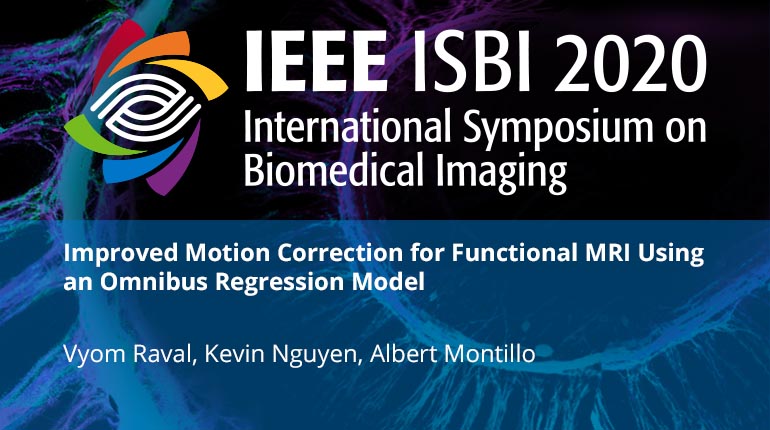
Already purchased this program?
Login to View
This video program is a part of the Premium package:
Improved Motion Correction for Functional MRI Using an Omnibus Regression Model
- IEEE MemberUS $11.00
- Society MemberUS $0.00
- IEEE Student MemberUS $11.00
- Non-IEEE MemberUS $15.00
Improved Motion Correction for Functional MRI Using an Omnibus Regression Model
Head motion during functional Magnetic Resonance Imaging acquisition can significantly contaminate the neural signal and introduce spurious, distance-dependent changes in signal correlations. This can heavily confound studies of development, aging, and disease. Previous approaches to suppress head motion artifacts have involved sequential regression of nuisance covariates, but this has been shown to reintroduce artifacts. We propose a new motion correction pipeline using an omnibus regression model that avoids this problem by simultaneously capturing multiple artifact sources using the best performing algorithms for each artifact. We quantitatively evaluate its motion artifact suppression performance against sequential regression pipelines using a large heterogeneous dataset (n=151) which includes high-motion subjects and multiple disease phenotypes. The proposed concatenated regression pipeline significantly reduces the association between head motion and functional connectivity while significantly outperforming the traditional sequential regression pipelines in eliminating distance-dependent head motion artifacts.
Head motion during functional Magnetic Resonance Imaging acquisition can significantly contaminate the neural signal and introduce spurious, distance-dependent changes in signal correlations. This can heavily confound studies of development, aging, and disease. Previous approaches to suppress head motion artifacts have involved sequential regression of nuisance covariates, but this has been shown to reintroduce artifacts. We propose a new motion correction pipeline using an omnibus regression model that avoids this problem by simultaneously capturing multiple artifact sources using the best performing algorithms for each artifact. We quantitatively evaluate its motion artifact suppression performance against sequential regression pipelines using a large heterogeneous dataset (n=151) which includes high-motion subjects and multiple disease phenotypes. The proposed concatenated regression pipeline significantly reduces the association between head motion and functional connectivity while significantly outperforming the traditional sequential regression pipelines in eliminating distance-dependent head motion artifacts.
 Cart
Cart Create Account
Create Account Sign In
Sign In





